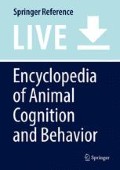References
Behne, T., Carpenter, M., Call, J., & Tomasello, M. (2005). Unwilling versus unable: Infants’ understanding of intentional action. Developmental Psychology, 41(2), 328–337.
Call, J., & Tomasello, M. (1998). Distinguishing intentional from accidental actions in orangutans, chimpanzees, and human children. Journal of Comparative Psychology, 112, 192–206.
Carpenter, M., Akhtar, N., & Tomasello. (1998). Fourteen- through 18-month-old infants differentially imitate intentional and accidental actions. Infant Behavior and Development, 21, 315–330.
Gergely, G., Nadasdy, Z., Csibra, G., & Biro, S. (1995). Taking the intentional stance at 12 months of age. Cognition, 56, 165–193.
Meltzoff, A. N. (1995). Understanding the intentions of others: Re-enactment of intended acts by18-month-old children. Developmental Psychology, 31, l–16.
Miles, H. L. (1986). How can I tell a lie? Apes, language and the problem of deception. In R. W. Mitchell & N. S. Thompson (Eds.), Deception: Perspectives on human and nonhuman deceit (pp. 245–266). Albany: State University of New York Press.
Olineck, K. M., & Poulin-Dubois, D. (2005). Infants’ ability to distinguish between intentional and accidental actions and its relation to internal state language. Infancy, 8, 91–100.
Phillips, W., Baron-Cohen, S., & Rutter, M. (1992). The role of eye contact in goal detection: Evidence from normal infants and children with autism or mental handicap. Development and Psychopathology, 4, 375–383.
Pitman, C. A., & Shumaker, R. W. (2009). Does early care affect joint attention in great apes (Pan troglodytes, Pan paniscus, Pongo abelii, Pongo pygmaeus, Gorilla gorilla)? Journal of Comparative Psychology, 123(3), 334–341.
Povinelli, D. J., Perilloux, H. K., Reaux, J. E., & Bierschwale, D. T. (1998). Young and juvenile chimpanzees’ (Pan troglodytes) reactions to intentional versus accidental and inadvertent actions. Behavioural Processes, 42, 205–218.
Author information
Authors and Affiliations
Corresponding author
Editor information
Editors and Affiliations
Section Editor information
Rights and permissions
Copyright information
© 2018 Springer International Publishing AG
About this entry
Cite this entry
Radeke, M. (2018). Accidental/Intentional Experiment. In: Vonk, J., Shackelford, T. (eds) Encyclopedia of Animal Cognition and Behavior. Springer, Cham. https://doi.org/10.1007/978-3-319-47829-6_1105-1
Download citation
DOI: https://doi.org/10.1007/978-3-319-47829-6_1105-1
Received:
Accepted:
Published:
Publisher Name: Springer, Cham
Print ISBN: 978-3-319-47829-6
Online ISBN: 978-3-319-47829-6
eBook Packages: Springer Reference Behavioral Science and PsychologyReference Module Humanities and Social SciencesReference Module Business, Economics and Social Sciences

